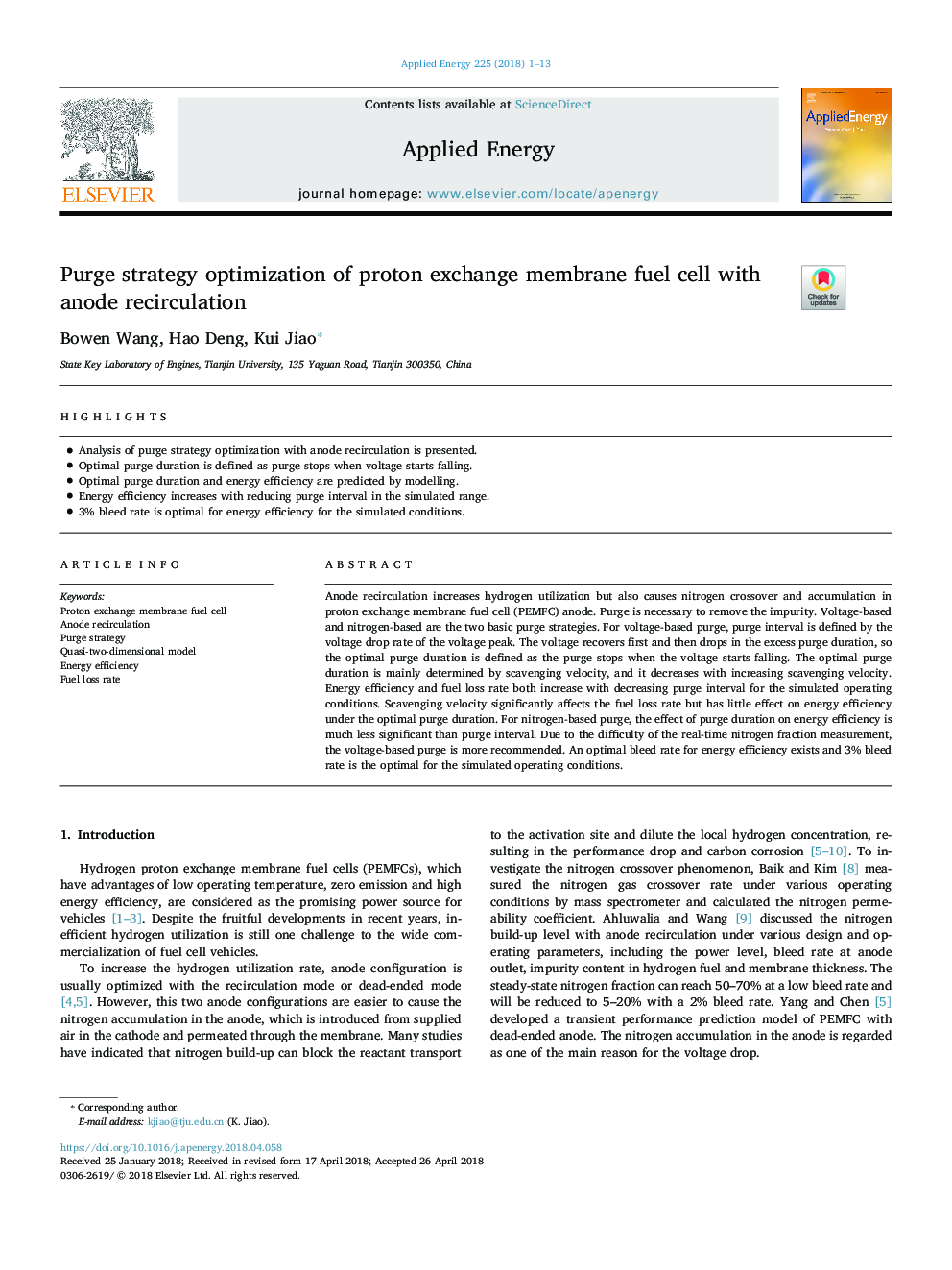| Article ID | Journal | Published Year | Pages | File Type |
|---|---|---|---|---|
| 6679884 | Applied Energy | 2018 | 13 Pages |
Abstract
Anode recirculation increases hydrogen utilization but also causes nitrogen crossover and accumulation in proton exchange membrane fuel cell (PEMFC) anode. Purge is necessary to remove the impurity. Voltage-based and nitrogen-based are the two basic purge strategies. For voltage-based purge, purge interval is defined by the voltage drop rate of the voltage peak. The voltage recovers first and then drops in the excess purge duration, so the optimal purge duration is defined as the purge stops when the voltage starts falling. The optimal purge duration is mainly determined by scavenging velocity, and it decreases with increasing scavenging velocity. Energy efficiency and fuel loss rate both increase with decreasing purge interval for the simulated operating conditions. Scavenging velocity significantly affects the fuel loss rate but has little effect on energy efficiency under the optimal purge duration. For nitrogen-based purge, the effect of purge duration on energy efficiency is much less significant than purge interval. Due to the difficulty of the real-time nitrogen fraction measurement, the voltage-based purge is more recommended. An optimal bleed rate for energy efficiency exists and 3% bleed rate is the optimal for the simulated operating conditions.
Related Topics
Physical Sciences and Engineering
Energy
Energy Engineering and Power Technology
Authors
Bowen Wang, Hao Deng, Kui Jiao,
